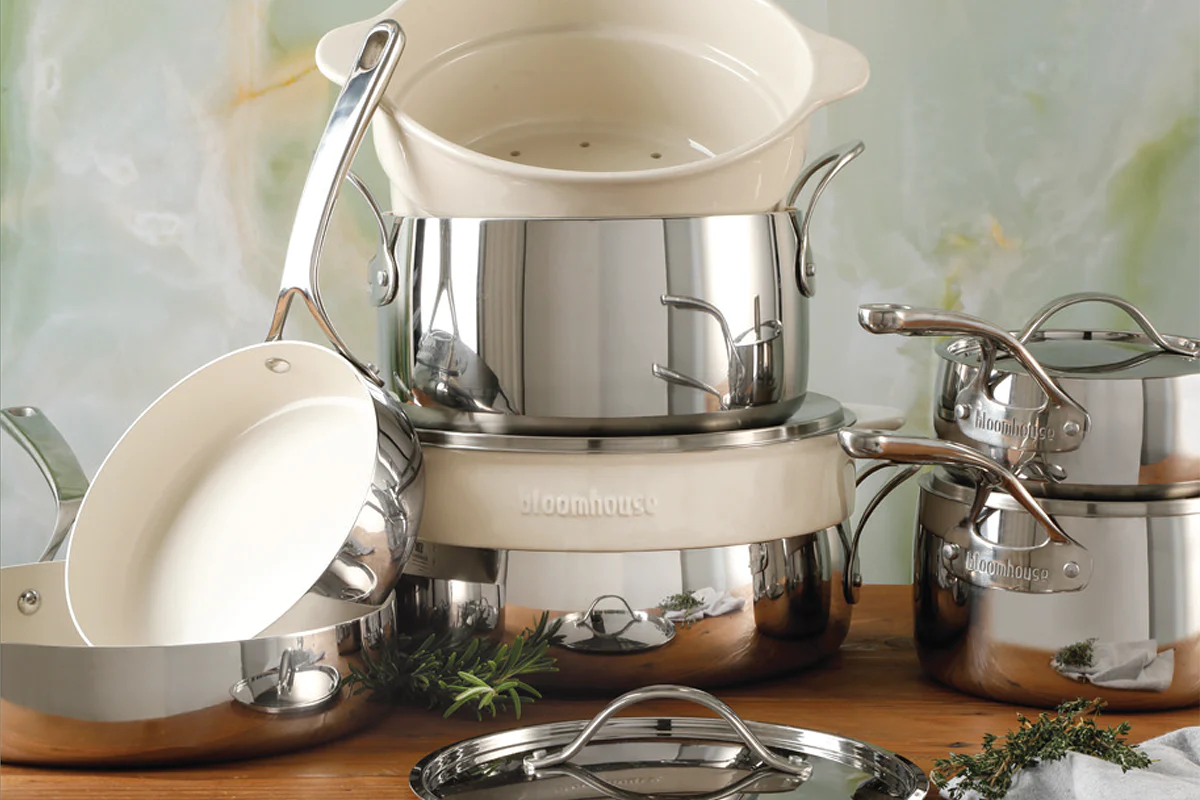When shopping for waterless belgique cookware reviews, it is important to determine your priorities. What cookware pieces are you most likely to use? What type of steam control mechanism would you like-steam valve or thermo control knob? To be classified as waterless cookware, the cookware must be at least 5 ply (layers), have some type of steam-control valve and have a flat, encapsulated bottom that contains the metal layers enclosed in stainless steel.
Waterless cookware is typically sold on the Internet, home parties, or state and county fairs. The cookware sold in department store environments is generally 3-ply. Waterless cookware because of its composition and construction is more expensive than conventional cookware. However, even within the waterless cookware market, there is quite a price range between competitors. Most waterless cookware is T304 surgical stainless steel. T304 cookware has the following advantages including corrosion resistance, temperature resistance, flavor protection, and ease in cleaning.
With proper care and maintenance, this cookware will keep its shine and beauty for a lifetime. Recently, a few companies have started to use T316 in their cookware. While there are some distinct differences between the two, the visible eye cannot detect any difference between the two. Further, there is not a distinguishable difference in taste either. What then is the actual difference between the two grades of stainless steel?
Type 304 contains 20% chromium or more and 10% nickel, comed with 0.08% carbon. It is used for chemical processing equipment, for food, dairy and beverage industries, for heat exchangers, and for milder chemicals. In the cookware industry, the 304 steel is most often used in the manufacturing process. T304 has the ability to withstand the corrosive action of various acids found in fruits, meats, milk, and vegetables. Therefore, it is often used for sinks, tabletops, coffee urns, stoves, refrigerators, milk and cream dispensers and steam tables.
Type 316 contains 16% to 18% chromium and 11% to 14% nickel. Type 316 also contains 2% molybdenum. The molybdenum is added to help resist corrosion to chlorides (like sea water and de-icing salts.) Type 316 is the main stainless steel used in the marine environment, with the exception of screws, bolts, nuts, and other fasteners where strength and wear resistance are necessary. Then Type 304 is typically used.
Do the differences specified above justify spending over $3000 for Saladmaster that now uses 316 stainless steel? Saladmaster offers a great product but many people simply cannot afford such an investment in cookware. When comparing the two grades, the differences are negligible. When exposed to harsh sea salt conditions 24 hours a day for 7 days a week, T316 would last longer under those conditions. If exposed to high concentrations of sodium chloride, T316 is definitely preferable. Therefore, if you are were to put one cup of sodium chloride (table salt) into 4 ounces of water on a daily basis, you would benefit from using the 316 stainless steel over the 304.
If you are considering the purchase of this cookware, two of your primary questions should be: (1) Which cookware set offers the pieces that I would most likely use? (2) What type of steam control valve would I prefer-the steam-control value that has an open/shut lever or the Thermo-control value that has a color-coded dial that visibly shows the cooking temperature.
Waterless cookware is a lifetime investment. While T316 cookware might be the best option for marine use, the majority of cooks can feel comfortable using T304 surgical stainless steel. If you can’t afford several thousand dollars for state-of-the-art cookware, don’t be dismayed. You can still buy quality waterless cookware at a fraction of that cost.. Check out our site-The Gourmets Cookware for some great deals on waterless cookware. In addition, we offer tips for cooking with waterless cookware, cleaning your stainless steel cookware, and great recipes to try with your waterless cookware.


